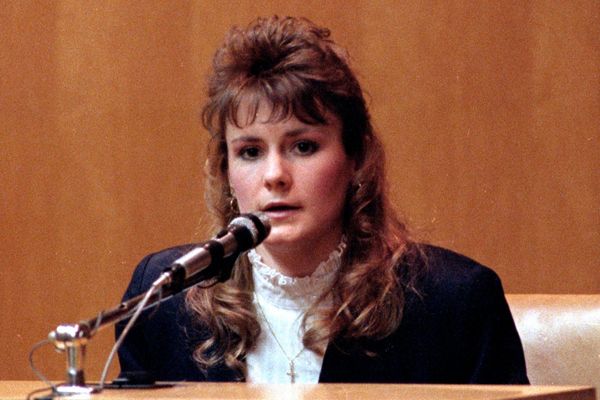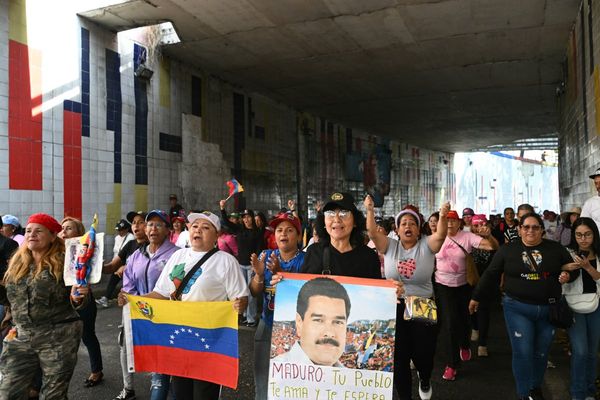Cattle farmer Sid Plant's drive to make his farm more climate friendly is inspired by his family.
"My granddaughter, when she was seven, said to me, 'Pa, I don't want to be one of the ones that have to sort out the mess you made about climate change,'" he said.
"Now, if that's not enough to push your grandad into doing something, I don't think anything would."
Whether it's for the future of their grandchildren or a financially conscious decision, some Australian farmers are shifting towards more climate-friendly practices.
Staring at the sky
Sid, a fifth-generation cattle farmer with a 1,214-hectare property on the Darling Downs, changed his ways after noticing changes in the climate over the years.
"Since I've been on this property, the biggest thing I have noticed is that we've had a decline in rainfall since 1950," he says.
"Australian farmers, no matter who they are or what they believe, spend most of their life staring at the sky, wondering what it's going to do to them."
He feels a strong sense of urgency to act.
"If we want to save our civilisation, we've got to do a lot of things differently," he says.
"As a global community, we have to make a lot of changes and make them quick because it is getting urgent."
Sid's herd size varies from zero up to 900. He tries to move his cattle around to different paddocks in order to let grass recover after being grazed — a similar practice to that of fellow farmer Adam Coffey.
'Somewhere in the middle'
Adam Coffey, a first-generation farmer, runs a 2,500-hectare cattle farm with his wife Jacynta in Colosseum, a rural town about 465 kilometres north of Brisbane.
After working on farms in just about every state in Australia, they decided to start their own cattle business, which sees 500 to 600 cows roaming their bushy property.
"We bought an ex-hardwood plantation property. It's a good high-rainfall area with lots of good production potential and good soils," he says.
"I'm not a climate denier. I'm not a climate alarmist either. I guess I'm somewhere in the middle. But we can only control what's in our scope."
Grass management
One of the measures Adam is implementing at his farm to reduce its carbon footprint is grass management.
"We run a time-controlled grazing enterprise in which we try to mimic the way that ruminant animals used to roam across landscapes," he says.
"We have 30-odd paddocks which we graze quite hard with one mob of cattle ideally. We then get good hoof impact, manure and urine to fertilise the soil and then those paddocks are rested for a long period of time."
Using that approach, Adam tries to increase soil health by returning more organic matter and nutrients to the ground and ultimately building soil carbon levels.
Although this type of farming is more commonly known as "regenerative farming", Jacynta prefers to not call it that.
"There are many farmers that we know who wouldn't call themselves regenerative farmers, but this is exactly what they do," she says.
"I'd be hesitant to put such a label on it and to say it's new and put someone in a box because then if you give it a try someone could look at it and say, 'Well, that's not really regenerative farming because it doesn't fit these specific guidelines.'"
Susanne Schmidt, an environmental scientist and professor at the University of Queensland, agrees with Jacynta when it comes to a specific definition of regenerative farming.
"There are so many grazing systems, it's hard to find the one unifying theme," she says.
"Regenerative farming can mean different things to different people, but in the most pure way it would be the idea of a system that is self-perpetuating, driven by natural processes where it's not losing carbon, biodiversity or functionality."
And she sees risks in having a strict definition.
"If you pinpoint regenerative grazing, there will always be people who will say, 'This is the only way of doing it,' and then it will become an ideology. I don't believe in ideologies, I believe in data and working together with farmers or industries to find good ways forward," she says.
The Coffeys use a chart to track their livestock's grazing activity.
"All we're trying to do is maintain our grass in growth stage 2," Adam says.
"In stage 1, the grass is too short and in stage 3 it's too mature. When it hasn't had the grazing pressure, it loses its nutrition and it's not photosynthesising anymore."
When a plant, in this case grass, is actively photosynthesising, it captures carbon out of the atmosphere and stores it in the soil.
"Something that people often don't realise is that soil is a living, breathing organism. And I think that's why we have mistreated it in so many ways," Susanne says.
Lowering emissions in the meat industry
The Australian red meat and livestock industry has set a target of becoming carbon neutral by 2030.
That means that by 2030 the net emissions of greenhouse gas into the atmosphere from the production of Australian beef, lamb and goat — including lot feeding and processing — is hoped to be zero.
According to a CSIRO analysis, the Australian red meat industry has more than halved its contribution to national emissions between 2005 and 2019, from 22 per cent down to 10.7 per cent.
The same analysis states that greenhouse gas emissions from the Australian red meat industry have fallen 59 per cent since 2005.
Edward Narayan, a senior lecturer of animal science at the University of Queensland's School of Agriculture and Food Sciences, says the Australian red meat sector is doing its part by contributing to a carbon-neutral industry by 2030.
"The red-meat industry will need to become more climate friendly and sustainable in the future," Dr Narayan says.
Susanne says the Australian red-meat sector's plans to be carbon neutral are a good step, but not all that simple.
"It's great to have a vision and work towards a goal, but there's also this question of making sure you count all the elements and provide good evidence for it," she says.
"You need leadership, visions, but you also need the nitty-gritties of showing that there's real data to back up these claims because that's where sometimes things fall over."
Government policies
Jacynta Coffey says she and Adam did not need to wait for "a government to set a policy to know that we're doing something beneficial for the climate".
"There is no compromise. We're going to do it," she says.
"It just makes sense — it makes financial sense, it makes ecological sense, environment sense. I just don't see why you wouldn't run a business like this. It's a win-win."
Another reason for being proactive, according to Adam, is to be ahead of what's coming.
"Otherwise the decisions are going to get made for us," he says.
He also explains the difficulty of rules and regulations in a country as big and diverse as Australia.
"Here we've got everything from tropical rainforests to deserts and everything in between. So it's really hard for a government to have a one-size-fits-all policy because that just doesn't work across a big country."
Sid has a different view about government intervention.
"Look, I don't want to see the government trying to run my business but they need to make policies that allow the right thing to be done and discourage the wrong thing to be done."
One of the key measures that has been implemented by the Australian government so far, is the Emissions Reduction Fund (ERF) which provides a financial incentive for farmers to undertake projects that reduce greenhouse gas emissions.
These can range from grass management to reducing the use of fertiliser or increasing soil carbon sequestering.
However, the ERF primarily relies on voluntary participation and does not set mandatory emissions reduction targets, meaning the impact of the program may be limited.
One of the organisations calling for strong climate policies is non-profit Farmers for Climate Action, which represents 7,000 farmers across Australia.
One of its main goals is to influence governments to implement climate policies that mitigate climate change and in turn benefit rural communities.
With climate policies and farming having caused tension in countries such as the Netherlands, Farmers for Climate Action is also aiming to shift the conversation around strong climate policy being a threat to an opportunity for farmers and country communities.
Meat consumption
Australians have long been among the biggest meat eaters in the world.
In 2017, Australians averaged 121.6 kilograms of meat per person per year — almost three times the world's average.
Research from the annual Climate of the Nation report shows 83 per cent of Australians are concerned climate change will result in droughts and flooding, affecting crop production and food supply.
Susanne Schmidt sometimes wonders if Australia could do things a little bit differently when it comes to meat.
"I think meat is a really useful part of people's diets, but at the same time I wonder if we really need meat that's been produced from animals that are not an actual part of the make-up of Australia," she says. "We could use kangaroo or emu."
At the same time Susanne sees that farmers are increasingly trying to understanding the system and working to make a change.
"We can't keep doing what we're doing. I think that's why the farming community themselves have come up with terms like regenerative. I think it's helpful because farmers bear the brunt of climate change," she says.
"More so in Australia than maybe many other places because of these terrible weather extremes."
Edward Narayan says that the question of whether to eat red meat or not is a complex one with no simple answer.
He explains how consumers have been driving improvements in the production of red meat by asking questions related to sustainability and climate change footprint.







